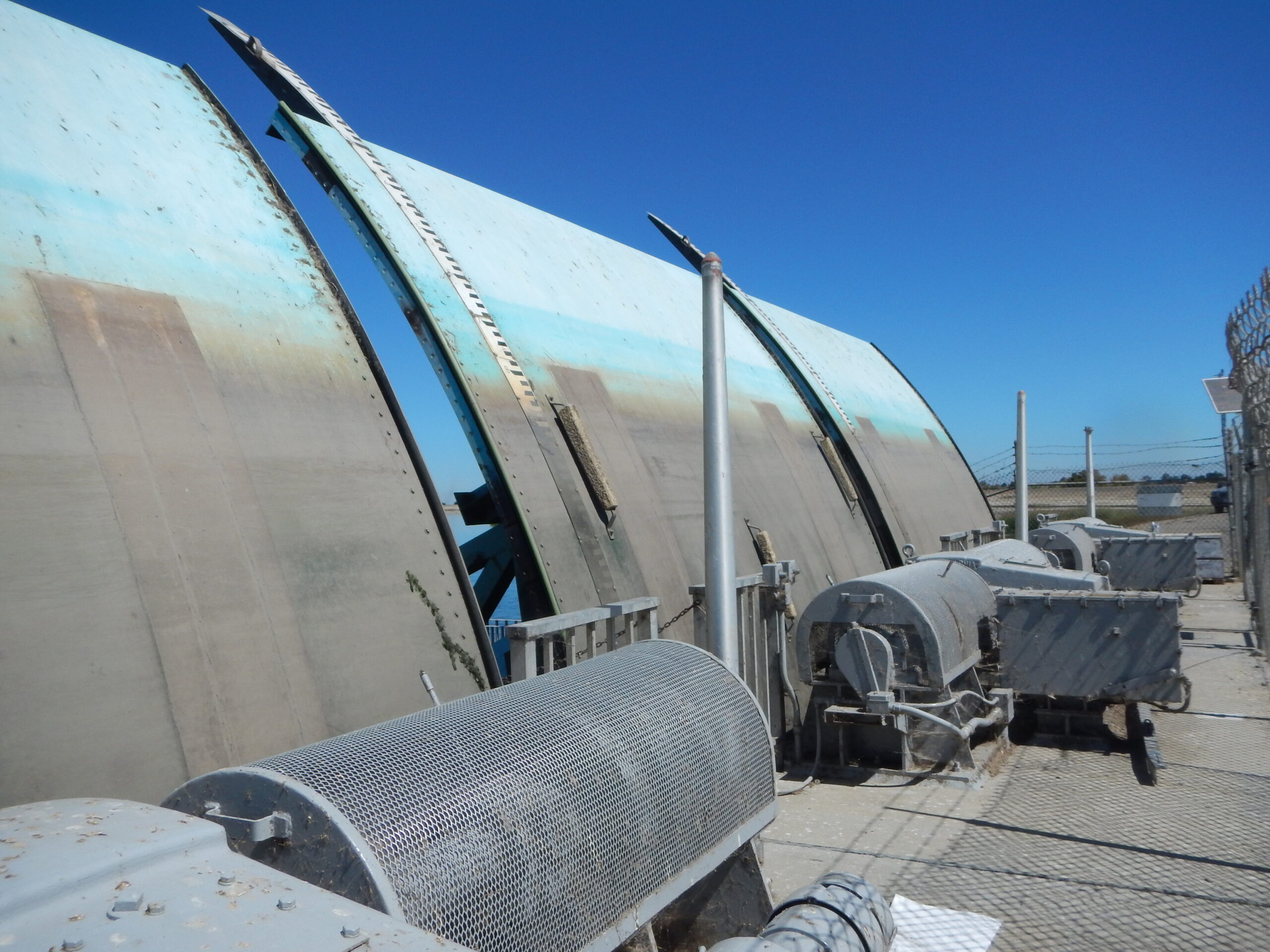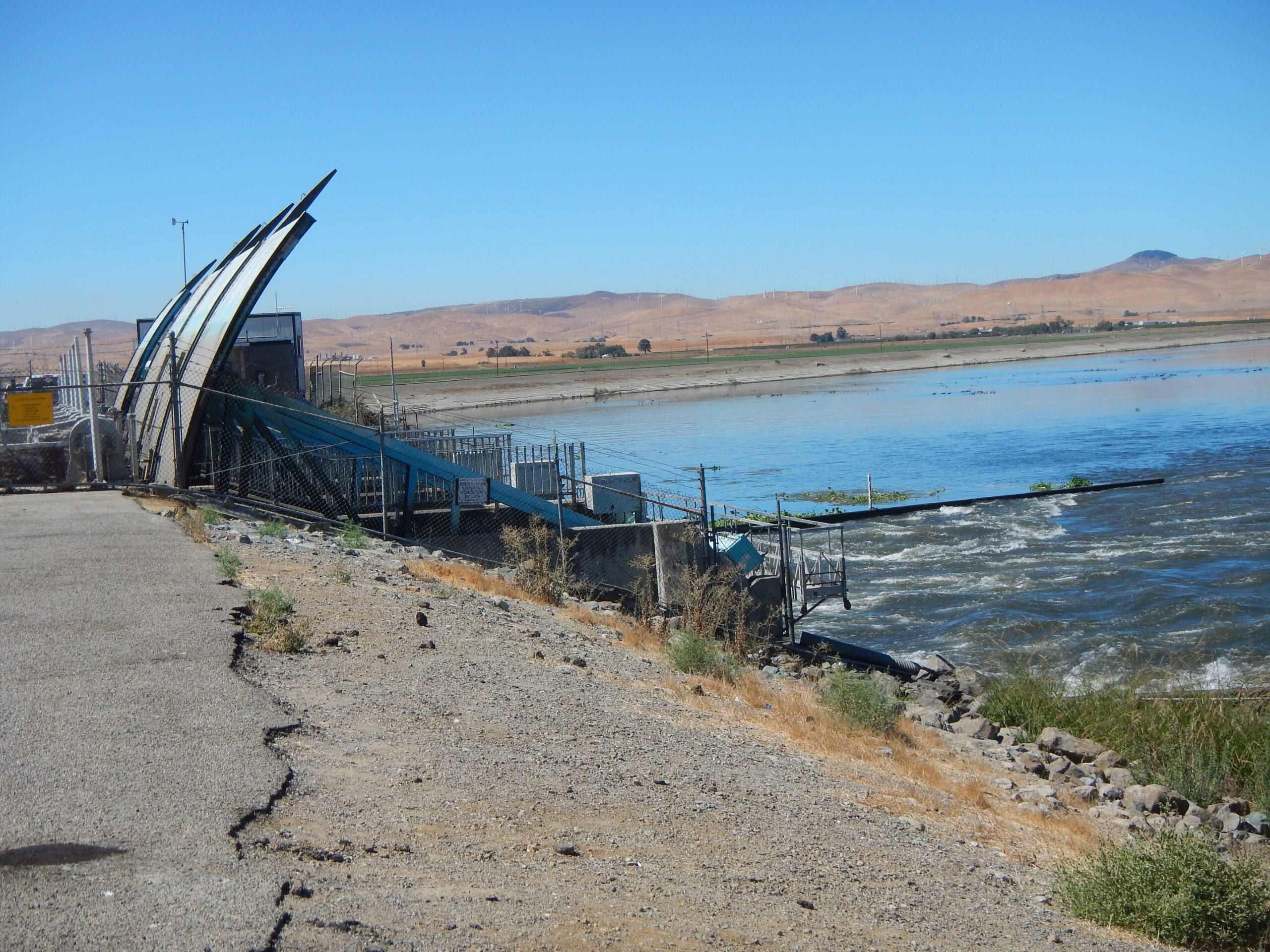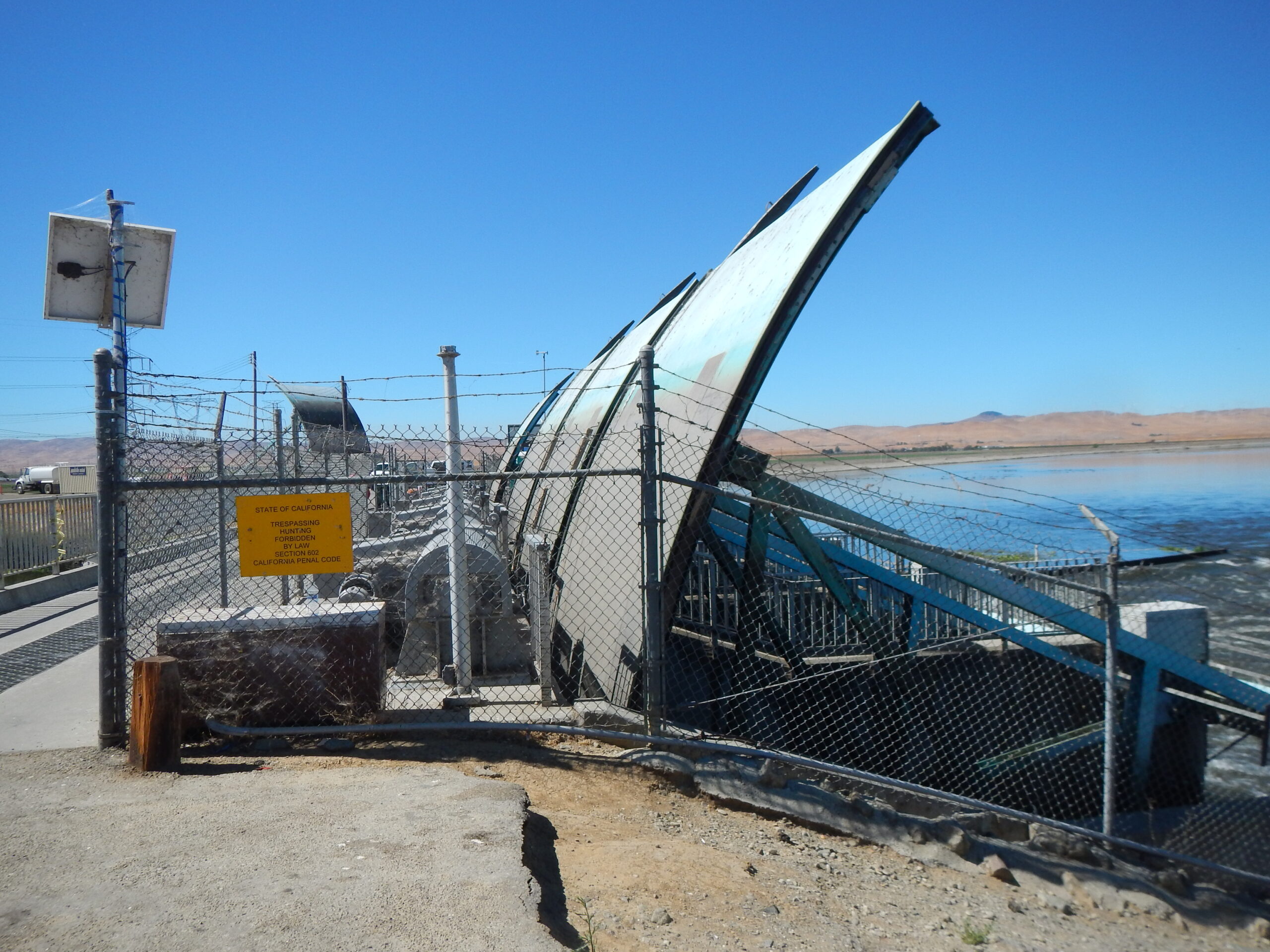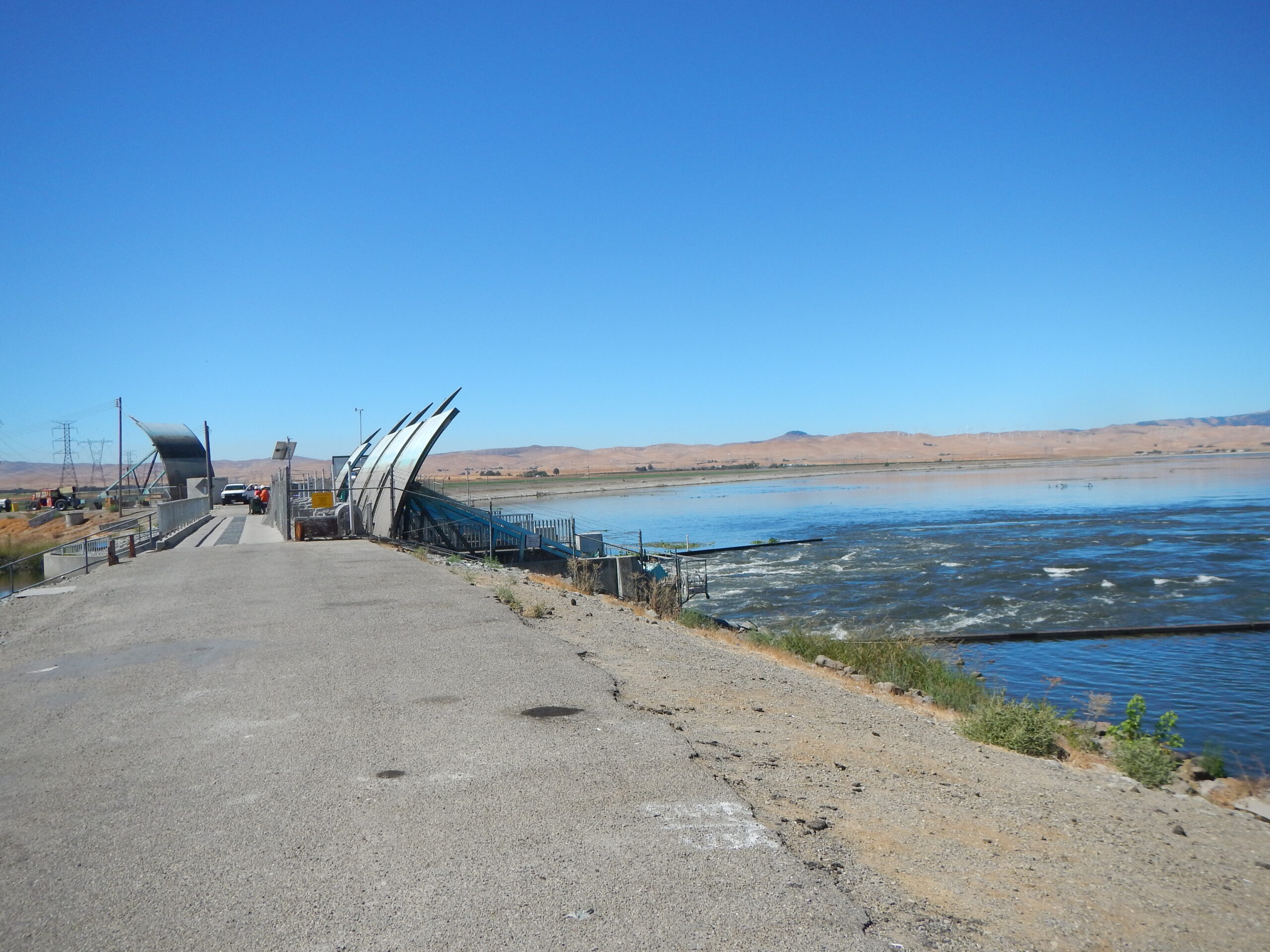Condition Assessment
Clifton Court Forebay Dam
Clifton Court Forebay is a shallow 28,653-acre-foot reservoir at the head of the California Aqueduct, in the southeast corner of Contra Costa County about 10 miles northwest of the City of Tracy, CA. Earth Reinforcement Testing, Inc. served as a subconsultant to HDR, Inc., GEI, and the California Department of Water Resources as part of the inspection team and forensic investigation following failure of one of the Tainter gates along the concrete intake structure. The Tainter gates rotate with respect to a pair of hinges and are supported within the gate bays by hoist cables, and trunnion beams. The trunnion beams each support a pair of hinges, and are fastened to the gate structure walls by a set of four prestressed steel tendon rods anchored into the concrete walls.




